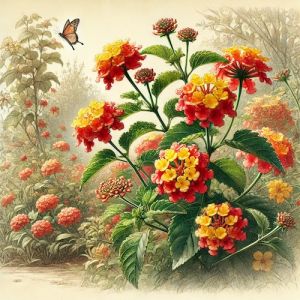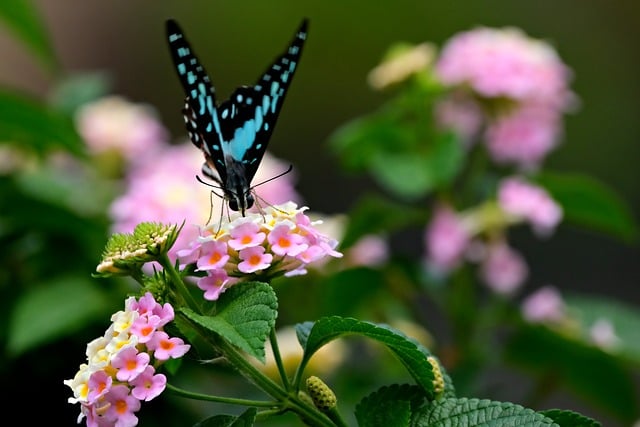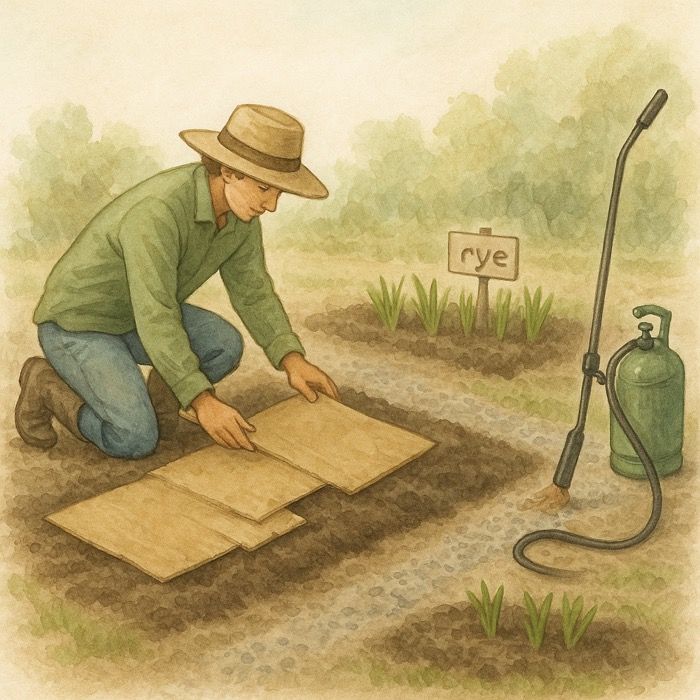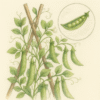Lantana Growing Guide: Your Complete Guide to Vibrant Blooms
Lantana (Lantana camara) is a stunning and resilient plant that brings vibrant colors and delightful fragrance to any garden. With its clusters of small, multi-colored flowers that bloom from spring through fall, lantana is a favorite for attracting butterflies and hummingbirds. Whether you’re looking to brighten up your garden beds or add a splash of color to containers, lantana is a versatile and easy-to-grow option. In this comprehensive guide, we’ll explore everything you need to know about planting, caring for, and enjoying lantana in your garden.
Characteristics and Varieties
Lantana is a perennial in warmer climates (USDA zones 8-11) but can also be grown as an annual in cooler regions. The plant’s flowers come in a variety of colors, including red, orange, yellow, pink, and purple. As the flowers mature, they often change color, creating a beautiful, multi-hued effect. Some popular lantana varieties include:
- ‘Confetti’: Known for its vibrant mix of pink, yellow, and orange flowers.
- ‘New Gold’: A compact variety with bright yellow blooms.
- ‘Miss Huff’: A cold-hardy variety that can survive in cooler climates.
Lantana’s foliage is aromatic and slightly rough to the touch, with dark green leaves that are often used in landscape design for their texture.
Master Gardener Tip: Use Lantana to Attract Pollinators Lantana is a magnet for pollinators, thanks to its vibrant, nectar-rich blooms. Plant it in sunny spots around your garden to attract butterflies, bees, and hummingbirds. For the best results, choose a variety with multiple colors, like ‘Confetti’ or ‘Miss Huff,’ as the changing hues can draw in a wider range of pollinators. Position lantana near other nectar-rich plants, such as salvia or verbena, to create a pollinator-friendly haven that keeps your garden buzzing with life all season long.
Master Gardener Steve
Ideal Growing Conditions for Lantana
Sunlight
Lantana thrives in full sun, needing at least 6-8 hours of direct sunlight daily. The more sun it receives, the more abundant the blooms.
Soil
Lantana prefers well-draining soil with a neutral to slightly acidic pH (6.0 to 7.5). While it can tolerate poor soil, it performs best in soil that is enriched with organic matter.
Water
Water newly planted lantana regularly to help establish a strong root system. Once established, lantana is highly drought-tolerant. Water deeply but infrequently, allowing the soil to dry out between waterings to prevent root rot.
Temperature and Humidity
Lantana thrives in warm, sunny conditions and can tolerate high heat and humidity. It is not frost-hardy, so in cooler regions, it is grown as an annual or brought indoors during the winter.
How to Plant Lantana
1. Prepare the Soil
Amend the soil with compost or well-rotted manure to improve drainage and fertility.
2. Dig the Hole
Dig a hole twice as wide and as deep as the root ball. Space multiple plants about 12-18 inches apart to allow for growth.
3. Planting
Place the plant in the hole, making sure the top of the root ball is level with the surrounding soil. Backfill with soil and gently firm down.
4. Water
Water thoroughly after planting and keep the soil moist but not soggy until the plant is established.
Container Planting
Choose a pot with good drainage and fill it with a high-quality potting mix. Ensure the container is large enough to accommodate the plant’s root system.
Caring for Lantana
Pruning
Prune lantana in early spring to remove dead or damaged wood and to shape the plant. Regular deadheading (removing spent blooms) will encourage continuous flowering. In colder climates, lantana can be pruned back hard after the first frost.
Fertilizing
Lantana typically does not require heavy feeding. A light application of a balanced, slow-release fertilizer in early spring will support growth. Avoid over-fertilizing, as this can lead to excessive foliage growth at the expense of flowers.
Pests and Diseases
Lantana is generally resistant to pests and diseases but can occasionally be affected by aphids, whiteflies, and spider mites. Treat infestations with insecticidal soap or neem oil. Overly wet conditions can lead to root rot and powdery mildew, so ensure proper spacing and good air circulation.
Overwintering Lantana
In regions where lantana cannot survive the winter outdoors, you can bring it inside. Place the plant in a bright, cool area and reduce watering to keep the soil just barely moist. Lantana may drop its leaves and go dormant but should revive in the spring when moved back outdoors.
Landscaping with Lantana
Lantana’s bright colors and long blooming season make it a fantastic choice for a variety of garden settings. Use it as a ground cover, border plant, or in mixed beds with other heat-loving annuals and perennials. Its spreading habit and tolerance for poor soil also make it ideal for erosion control on slopes and in challenging garden spots.
Benefits of Growing Lantana
- Attracts Pollinators The vibrant flowers are a magnet for butterflies, bees, and hummingbirds.
- Drought Tolerance Once established, lantana requires minimal watering, making it an excellent choice for xeriscaping.
- Low Maintenance With minimal care, lantana will bloom profusely from spring to frost.
- Versatility It can be grown in garden beds, containers, and hanging baskets.
Common Questions About Lantana
1. Can I grow lantana in shade?
Lantana performs best in full sun. It can tolerate partial shade but will produce fewer flowers.
2. Is lantana toxic?
Yes, lantana is toxic to pets and humans if ingested. Always plant it in areas away from children and pets.
3. How do I control the spread of lantana?
In some regions, lantana can become invasive. Prune regularly to remove seed heads, and avoid planting in natural or wild areas where it may spread.
Final Thoughts
Lantana is a beautiful, low-maintenance addition to any garden, providing vibrant color and attracting pollinators throughout the growing season. With proper care, you can enjoy this versatile plant for many years. For more tips on growing and caring for your garden, explore our other guides and start creating your dream garden today!
More From Our Master Gardener
Recent Posts

❄️ Snow as Fertilizer – The Truth About “Poor Man’s Nitrogen”

5 Unexpected Winter Weed Control Strategies (That Don’t Involve Mulch)

Harnessing Winter Sun – Passive Solar Tricks for Your Garden

How to Grow Spinach – The Ultimate Beginner’s Guide for Tender, Nutritious Leaves

How to Grow Peas: The Ultimate Beginner’s Guide for Sweet, Crisp Harvests















